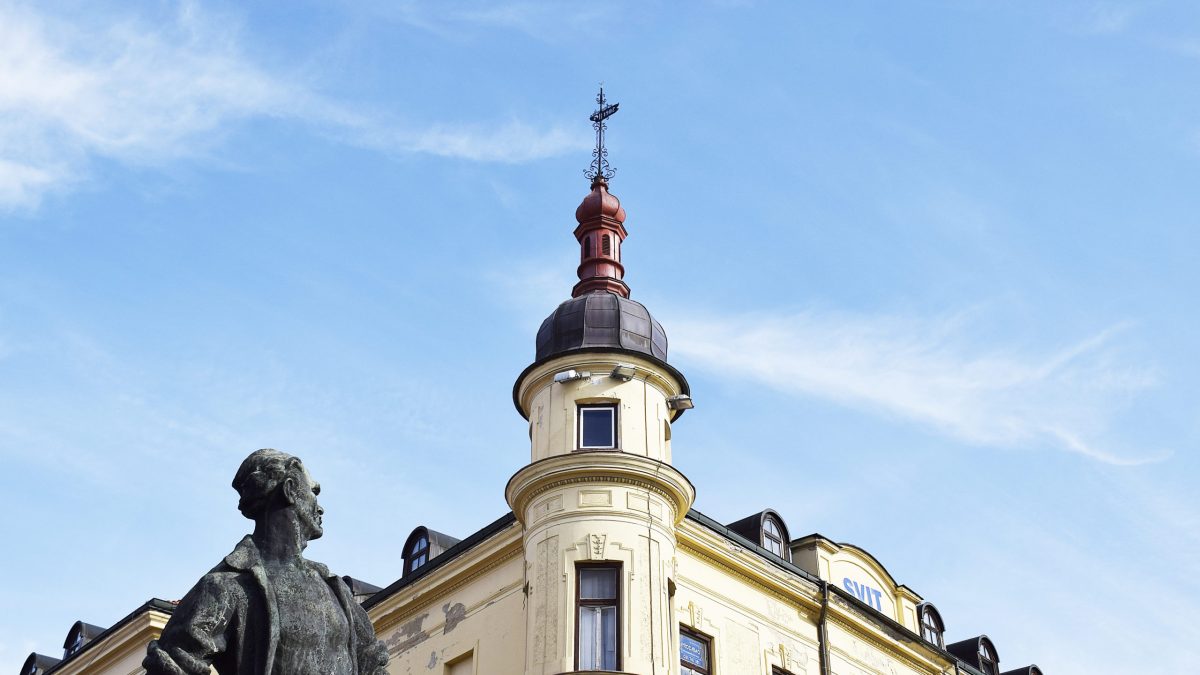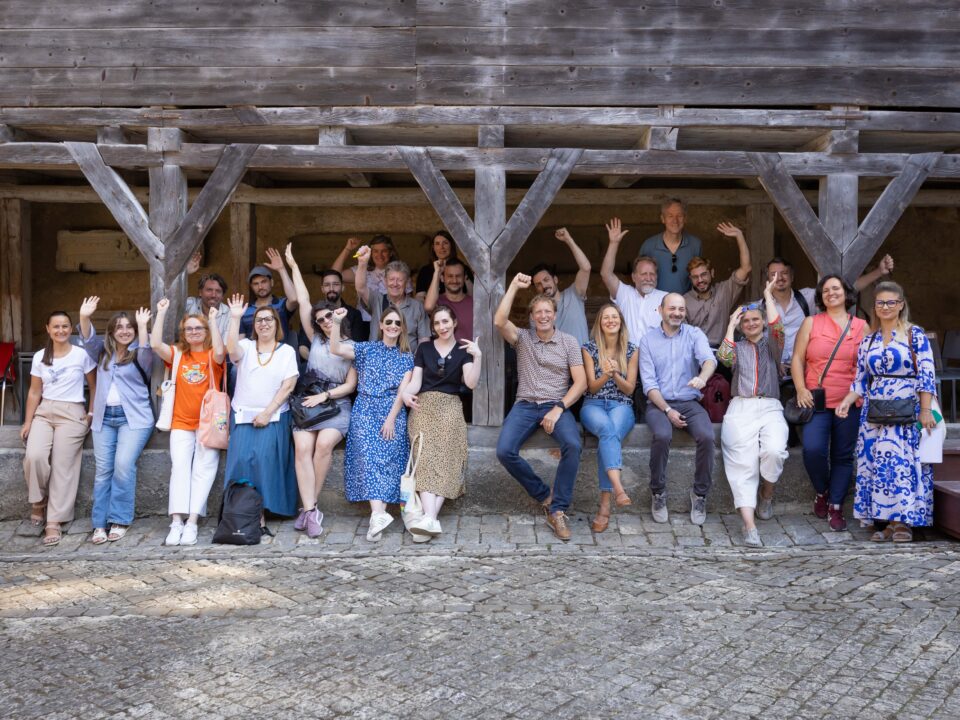

© Ajda Vernik
Lisboa: Alfama and Mouraria districts
Lisbon (Portugal) is a historic city, with a strong memory. A vibrant, modern and innovative European capital, the city thrives on being part of a collaborative international network.
As one of the most western capital cities of Europe, Lisboa hopes to implement innovative initiatives and solutions that promote sustainability, regardless of political hiccups, short termism and red tape (here and there). It is key to see the impact of implemented innovation, to counteract misunderstandings around tackling (or not) the right (or wrong) issues. One key concern is Lisboa’s (perceived) inability to have a comprehensive understanding of its Historic Urban Area (HUA).
Engaging diverse stakeholders is complex and poses challenges, starting with forming common ground and shared vision. At the same time this offers opportunities, with ‘super powers’ of transdisciplinary/multidisciplinary teams. When enacted with inclusivity and clear objectives this will shape the path to promote entrepreneurial culture, with a set of tangible activities that inspire a positive future of the HUA.
With the current economic, social and environmental vulnerability, Lisboa’s lack of social cohesion is ever more ‘visible’ and concerning, therefore inclusive approaches need to be baked in from the start, including digital and physical literacy. The pandemic provides opportunities for positive change.
The opportunity to interlink current work and build upon past experience in innovation and acceleration will help Lisboa in the co-creation and designing of collaborative processes. With Lisboa’s local management and decision maker as one key player in the HUA that has access to potentially great resources, the municipality, as a central strategic stakeholder, can support positive change.
Urban regeneration that reinforces ties with local citizens and builds community cohesion will facilitate a community of representative stakeholders that cooperate in the various HUB-IN topics and encourage community organisations to participate in activities. Providing tools that can empower local communities, Lisboa hopes to build a more sustainable community and stop gentrification.
Nicosia’s historic city centre
Nicosia, capital of Cyprus, is a medium size city, contending with a turbulent history and its internal divisions along with the division of the island of Cyprus. The division of the island in two, makes the need for community engagement between the Turkish Cypriot and Greek Cypriot communities complex, challenging and pressing. The core HUB-IN team hopes that the project will allow them to map and engage with an ecosystem of stakeholders, citizens and communities, counteracting divides. Competition among stakeholders presents a challenge. One key concern is to also engage those hard to reach, involving Turkish Cypriots, minority groups and other stakeholders that are often absent from such processes.
Central to this will be the development of a reliable dataset of the historic centre that enables them to understand what is being done already and by whom. The HUB-IN team in Nicosia hopes the project enables them to experiment with new ways of working, including platforms, finance models and innovation methods, whilst conserving the sense of place and improving the political landscape and quality of life. This project and its processes and methodologies are new to them in parts and the fear around how to manage the unknown is present. There are fears around the spirit of knowledge and skills sharing. Key concerns are to realise tangible results, managing expectations and the long- term impact of efforts, considering long-term sustainability and clearly communicating ‘what comes next’.
There are opportunities with start-up accelerators, organised by different institutions, including some youth programmes, that HUB-IN could take advantage of these intensified efforts towards building entrepreneurial spirit in Cyprus. HUB-IN could help to add specific aspects in the agendas of such accelerators in order to reinvent local practices.
Slovenska Bistrica’s city centre
Slovenska Bistrica is a small but vibrant Slovene town. It is the administrative and industrial centre of the south-eastern part of Pohorje. The area is rich in cultural heritage and has a thriving cultural sector. It also hosts numerous and diverse crafts businesses and is well known for its aluminium industry. Slovenska Bistrica is surrounded by a natural landscape that provides good produce, great recreational opportunities and healthy lifestyle for inhabitants. A key hope is that the project will help to motivate collaboration and the emergence of creative networks of stakeholders, building on existing strong relationships with local traditions and craft and establishing new relationships, bringing in innovative approaches for regeneration and sustainable development of the town and the surrounding areas. The hope is that driving innovation can encourage local communities to create new innovative products and initiatives, try new techniques, connect and learn from each other, seize new opportunities, learn about alternative financing tools,
and foster competitive advantages.
One of the foundational needs facing the city is to gain a deeper understanding of the needs of the local ecosystem and a shared vision that creates clarity of purpose, helps to prioritise possibilities and options of implementation.
Slovenska Bistrica hopes to create a pilot adapted to the local specificities. With this local focus and strong local engagement, with impulsion for co-creation locally, inhabitants can appropriate the pilot project. The territory demonstrates strong support from local partners and evident support for local co-creation initiatives. However, there is some concern that, as a small town, Slovenska Bistrica might lack capacity, resources and familiarity with project processes and methodologies to undertake this effectively, and might find it challenging to reach the objectives.
The project is seen as an opportunity to motivate community engagement, develop self-sustaining systems (mitigating resource issue) and explore alternative and sustainable models of finance and governance, that promote tradition and inclusion whilst supporting local businesses and sustainable tourism.
Utrecht: De Werkspoorkwatier
Utrecht is a historic and well-connected city and a very fast growing city. With extensive experience and a focused large, as well as diverse array of potential stakeholders, cooperation is key. They see cooperation as the starting point to any successful initiative and at the centre of this is the need to find common ground between different groups, without losing the individual identities that make this HUA special.
The aim of the city is to organize the work efficiently and to develop a sound business and organizational model for the Machinery (De Machinerie) to ensure the legevity of any initiatives. In order to do so, it is important to define key organizational roles and creating a common understanding around them, attributing responsibilities accordingly.
HUB-IN can strengthen the developments in the Werkspoorkwatier (HUA) and contribute to the cultural vision 2030 of the city. A vision where a diverse range of art and culture, inclusivity, stimulating creative capacity and space for artistic development are the four key themes. The HUA and the HUB are promising environments for creative cross-overs and innovation. Learning by doing, working with place based methods and tools, models offered by HUB-IN that are in line with the local goals, including participation and communication, the geo-tool, webinars, finance governance and business models can contribute to working on the Machinery (HUA HUB) and the environment and can be applied to other projects in the city in collaborations.
Find out more in HUB-IN “Current Landscapes” report
Want to know about the other pilot areas of the project? Read this article




